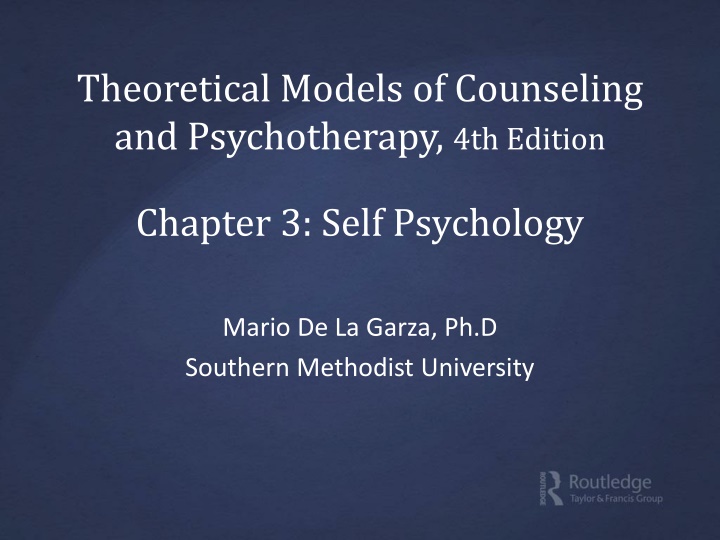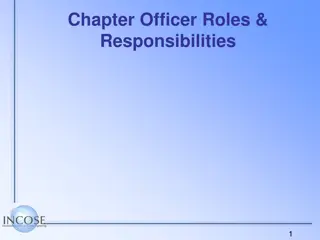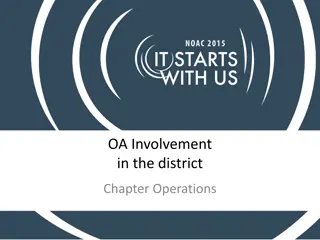
Psychodynamic Theories in Counseling and Psychotherapy
Explore the world of psychodynamic theories in counseling and psychotherapy, delving into concepts such as drive theory, ego psychology, object relations, and Heinz Kohut's contributions to self psychology. Gain insights into how emotions, cognitions, behaviors, and unconscious processes influence personality development and therapeutic approaches.
Download Presentation

Please find below an Image/Link to download the presentation.
The content on the website is provided AS IS for your information and personal use only. It may not be sold, licensed, or shared on other websites without obtaining consent from the author. If you encounter any issues during the download, it is possible that the publisher has removed the file from their server.
You are allowed to download the files provided on this website for personal or commercial use, subject to the condition that they are used lawfully. All files are the property of their respective owners.
The content on the website is provided AS IS for your information and personal use only. It may not be sold, licensed, or shared on other websites without obtaining consent from the author.
E N D
Presentation Transcript
Theoretical Models of Counseling and Psychotherapy, 4th Edition Chapter 3: Self Psychology Mario De La Garza, Ph.D Southern Methodist University
Psychodynamic Theories Retain significant similarities to psychoanalysis - Emotions, cognitions, and behaviors are influenced by psychological processes that are, to some degree, unconscious. - Early caretakers and one s interactions with them influence the psyche. - Personality develops through invariant stages. - Important concepts include defenses and transference. - A client s psychic material must be interpreted.
Drive Theory Nearly indistinguishable from Freud s psychoanalysis Emphasis is on libidinal and aggressive drives that energize psychological processes. Libidinal drives are impulses toward bodily pleasure, excitement, anticipation, love, or happiness; more than just sexual impulses.
Ego Psychology Emphasis is on the ego s role in regulating, controlling, and channeling drives. Anna Freud elaborated on the ego s defense mechanisms. Heinz Hartmann expanded upon the idea that the ego could actually alter drives or what one experiences as pleasurable; he also expanded upon the separation of the self from the ego.
Object Relations Object object of desire; what satisfies a drive; usually refers to a person s caregiver or significant others in one s life. Focus is upon objects in a person s infancy and early childhood and how a person experienced and internalized those objects. These internal representations of significant objects are believed to persist in a person s unconscious mind throughout life greatly influencing one s experience.
Object Relations These dynamics have great influence on the development of one s sense of self (ego). A person s perception of the object is more important than the actual object. A client s pre-egoic, prerational perception is likely to contain misinterpretations.
Heinz Kohut & Self psychology Kohut viewed classical psychoanalysis and other psychodynamic theories as limited, especially in understanding and treating more severe psychological disturbances. He expanded on what he termed disorders of the self which included narcissistic, borderline, and psychotic conditions. In particular, he greatly expanded upon narcissism.
Heinz Kohut Born in Vienna; the only child of Felix and Else Kohut Father was both physically and emotionally distant; mother fluctuated between being oppressively close and distant Highly educated and graduated from the University of Vienna with a degree in medicine in 1938 Moved to Chicago in 1938 and spent the majority of his life training analysts and practicing psychiatry
Heinz Kohut Was honored and revered by some and shunned by others when he published The Analysis of the Self in 1971 Formulated new ideas about how the self develops, how this development can go awry, and how one treats the resulting disturbances of the self Theory was a humanistic theory
Philosophical Underpinnings Classical Phase determinism objectivity Transitional Phase began conceptualization of the self philosophical shift Radical Phase humanism subjectivity
Philosophical Underpinnings Classical Psychoanalysis biological urges pathology irrational drives Self Psychology social urges developmental potentials legitimate psychological needs experience-near subjectivity empathy as curative distant objectivity insight as curative
Function of the Psyche Primary function of humans: to relate with other human beings Humans have drives to ensure relationship with others. Sole lifelong human need: to develop and maintain a self
Function of the Psyche: What is Self ? Self several interrelated functions including: organizing experience restoring cohesion that has been jeopardized maintaining homeostasis through tension regulation validating subjective experience soothing distress valuing one s abilities and oneself
Function of the Psyche Infants are born with the ability to form bonds with self-objects and the potential to develop structural/functional capacities. Self-objects external objects (usually people) subjectively experienced as providing intrapsychic functions Transmuting internalization the functions of the external self-object are slowly, gradually, bit-by-bit transformed into internal capacities.
Function of the Psyche (innate human self-object needs) Empathic attunement and mirroring the self- object accurately perceives the infant s emotional states and emerging abilities and responds with acceptance, validation, admiration, and caring action. Idealization the infant perceives at least one self-object as great, all-powerful, and all-knowing and connects and merges with that self-object (also known as the idealized parental imago).
Function of the Psyche (innate human self-object needs) Twinship experience (alter ego needs) the individual s need to experience an alikeness to a self-object Optimal empathic failures when a self-object fails to empathize in some mild, nontraumatic way with an individual
Structure of the Psyche Self a recipient of impressions and a center of initiative that provides a person cohesion, organization, and continuity in space and time Includes three poles: nuclear ambition, talents and skills, and guiding ideals A proactive and creative structure/function Personality relatively persistent feelings and actions
Role of the Environment A child s family usually plays the most central role in the development of the child s self. Any aspect of a thing or person that/who fulfills one or more of a child s self functions, whether within or outside of the family, is a self-object. Information, fictional characters, celebrities can serve as self-objects.
Personality Development Development of a healthy self 1) Establishment of self-object bond 2) Optimal empathic failures 3) Transmuting internalization 4) Formation of self structure/function Mirrored grandiosity plausible ambitions Idealized parental imago values and ideals Experience of twinship talents and skills
Personality Development Development of unhealthy self 1) Potential self-objects are neglectful and/or abusive exhibiting physical and/or emotional indifference and/or hostility. 2) Traumatic empathic failures occur. 3) Individual perceives little or no empathy, nothing/no one to idealize, and little or no opportunity for twinship. 4) Self-object relationships do not form or are tenuous. 5) Self remains undeveloped or is arrested or reversed in development.
Psychopathology earliest and most extensive empathic failures psychosis borderline conditions narcissism neuroses later and less extensive empathic failures
Personality Change Process Counseling involves reparenting the therapist provides self-object functions for the client that the client s primary caretakers did not provide, transmuting internalization occurs, and the client s self develops more fully. Basic therapeutic process: 1) Reactivation of the client s needs (self-object transference) 2) Nonfulfillment of some of the client s needs by the counselor (optimal empathic failures); a counselor s misinterpretations 3) Reestablishment of the empathic bond between client (self) and counselor (self-object)
Clients Role Kohut said the client s primary responsibility in therapy was to establish self-object transferences; in other words, reactivate those needs that were not met by the client s self- objects in early life. Clients must be willing to allow counselors to become psychologically important to them (to become self-objects). Clients must be willing to persevere through the process of empathic failure and repair in order to allow the self to continue to develop.
Counselors Role The counselor s primary responsibility is sustained empathic inquiry into the meaning of the client s experience of the therapeutic (self-self-object) relationship. To reparent the client; to permit the client to dwell in and consolidate the transferential relationship At times, the counselor must offer misinterpretations (these will inevitably occur). To detect when empathic failures have occurred, nondefensively acknowledge them, and interpret them for the client To have a strong sense of self
Stages and Techniques The self/self-object relationship formed through empathic attunement by the counselor is the medium through which the client s self emerges. Topics in self psychotherapy follow a general sequence: 1) Immediate symptoms and related concerns 2) Client s history with emphasis upon self-object relationships 3) Nature of immediate relationship between client and counselor 4) Manifestations and resolutions of the client s self-object transference Two phases of analysis: understanding phase and explanatory phase
Interface with Recent Developments in Mental Health Nature/Nurture Kohut emphasized the familial environment s influence on the self. Kohut also acknowledged that genetic predisposition does affect an infant s potential to develop self-object relationships, and thus a healthy self. DSM 5 Diagnosis Kohut did not favor diagnostic labels, but he did refer to diagnostic levels of structural development. Therapists must be willing to sustain empathy for clients rather than label them as unable to be understood.
Interface with Recent Developments in Mental Health Pharmacotherapy There does not seem to be an aversion to using medication alongside psychotherapy. Managed Care/Brief Therapy Some newer forms are brief in length addressing specific client concerns as well as self/self-object interactions. Technical Eclecticism Interfaces well with other theories including cognitive, client-centered, transpersonal, and integral
Culture Honors each client s unique experience The experience-near approach frees the counselor from cultural preconceptions. emphasis on sustained empathic attunement Demonstrated applications to wide variety of cultural groups
Gender and LGBTQ Issues Gender roles are important as expressed with the connections one has with other. Emphasizes interdependence over independence Kohut tended to depathologize same sex attraction and focus on other areas of concern when presented by a client
Spirituality Higher power = idealized parental imago Many transpersonal and integral theorists draw heavily from psychodynamic theories. Emphasis on relationship: one s relationships with other people constitute the foundation of one s experience
Interface with Recent Developments in Mental Health Effectiveness of Psychotherapy Psychodynamic research has focused more on development than psychotherapy. Studies have revealed the importance of the therapeutic relationship, perceived similarities between client and counselor, and idealization.
Weaknesses Failure to acknowledge and integrate ideas of predecessors Use of the term and concept of restoration Narrow focus on narcissistic issues Confusion regarding the concept of self as both a person and a psychic structure
Distinguishing Additions Reformulations of narcissism Description of the formation of psychic structure via transmuting internalization Concepts of self-objects and three self-object transferences Recognition of the profound importance of empathy and the centrality of the client s self- experience
References Fall, K. A., Holden, J. M., & Marquis, A. (2023). Theoretical models of counseling and psychotherapy (4thed.). Routledge.














